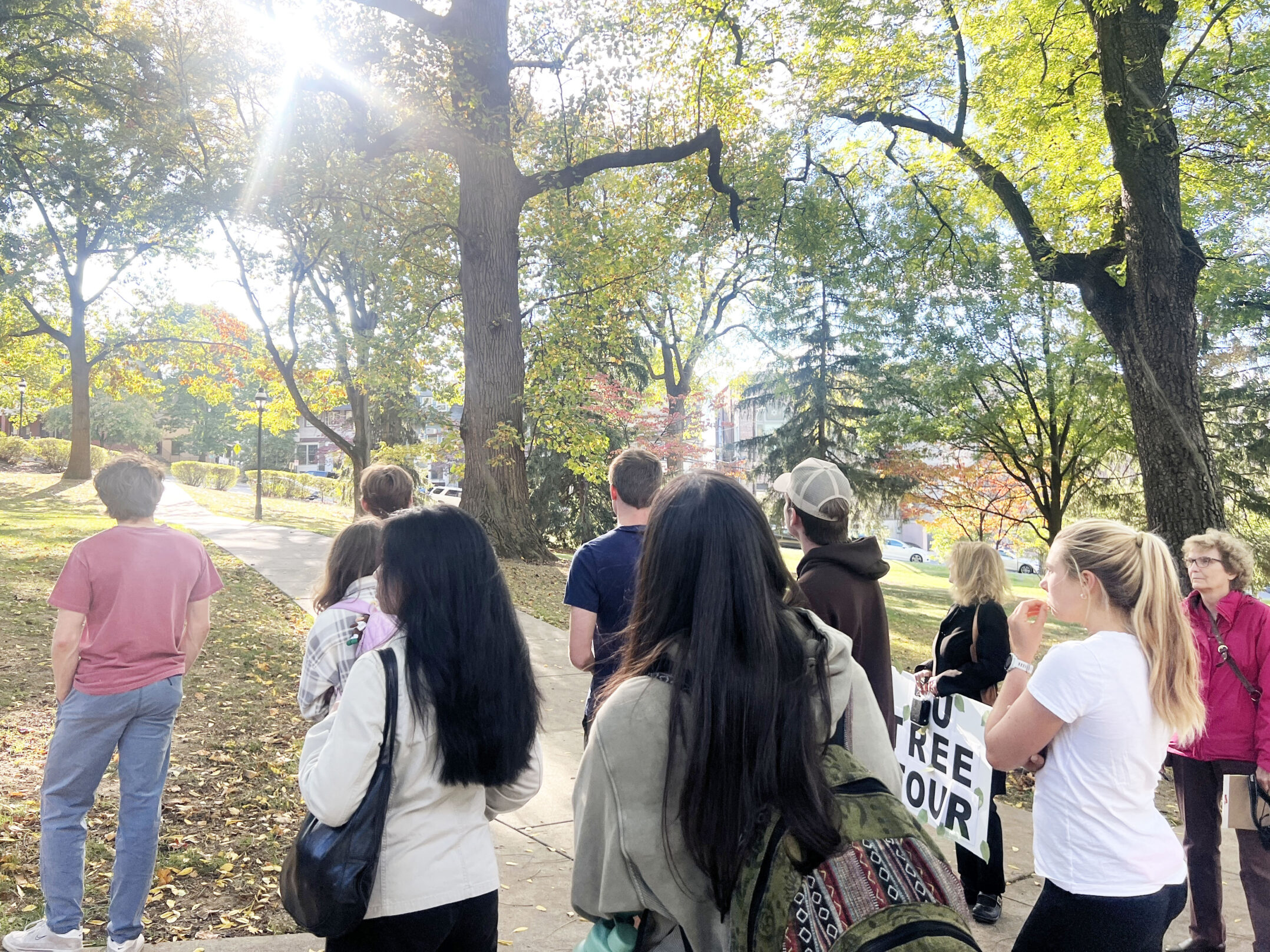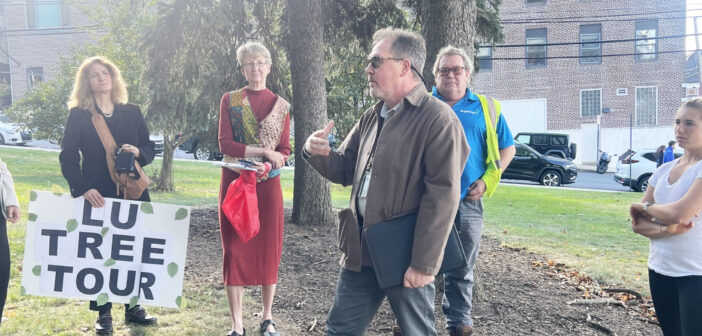Editor’s Note: This story has been updated to correct John Shleder’s title and the spelling of his name.
John Schleder’s work as the arborist at Lehigh goes beyond simple tree care — he preserves a living history.
Lehigh’s campus is populated with a range of historic and newly planted trees from various species, all of which Schleder, who works for the groundskeeping company the university contracts, tends to throughout the year. He also hosts walking tours around campus — sponsored by Library & Technology Services and the Office of Sustainability — to educate students about the greenery, its history and interesting facts.
Some of the oldest trees on campus are in the Sacred Grove, on the corner of Brodhead and E. Packer. In Lehigh’s early years, the area was entirely treeless and held faculty residences.
Stacey Kimmel-Smith, assistant director of client services, has worked at Lehigh for over 20 years and is involved in sustainability efforts on campus. She said around 1900, about one-third of the trees on the campus were chestnut trees until a blight decimated much of the forested area.
In response, Henry Drinker, Lehigh’s president at the time, hired a biologist to create a plant nursery. Over the years, the university has successfully re-grown over 100,000 trees.
Today, the Grove is home to a variety of trees, including sugar maple, tulip poplar, white ash, black walnut, Norway spruce, Douglas fir, hemlock, several oak species and a Kentucky coffee tree.
Schleder said he thinks one of the most remarkable trees in the Grove is a black walnut that was struck by lightning. While most trees would explode from the moisture within, this one survived.
Nearby stands a Kentucky coffee tree, one of the largest Schleder said he’s ever seen.
The Grove is also home to a green dogwood, a species with exfoliating bark that can help with healing. In the spring, leaves emerge on the tree and then flowers sprout.

Students and faculty take a tree tour led by arborist John Schleder on Oct. 9. The tour aimed to share the history of various trees on campus. (Marin Levine/B&W Staff)
One of the oldest trees on campus, a sugar maple, doesn’t have much time left in the Grove.
“The only reason we’re cutting it down is because it’s going to be dead soon,” Schleder said. “This tree has been in declining health for many years and we continually monitor the health of trees on campus for safety reasons”
Schleder said some trees must be removed due to rot, poor health or structural defects, but he also follows Lehigh Facilities’ policy of planting a new tree each time one is removed.
Last year, he planted a Franklinia tree — a species extinct in the wild. He said the species, which he procured from a local grower, represents his ongoing efforts to preserve rare trees.
The Memorial Walkway is lined with trees, such as the Japanese paulownia, a prized tree in Japan known for its workable wood.
A persimmon tree also lines the walkway, which grows small, orange fruit. During his tours, Schleder said he jokingly encourages visitors to taste the fruit when it falls.
The Memorial Walkway is also home to a tulip tree, known for its healing abilities. Schleder said the tree suffered damage that created a “wound,” but in a natural process of self-preservation, it was able to “protect itself.”
The magnolia, one of Schleder’s favorites, also demonstrates this ability, as one of its limbs is currently going through a natural re-rooting process.
“One of the reasons it’s one of my favorites is because it shows you what trees like to do to keep on going,” Schleder said.
Anna Stedje-Larsen, ‘26, is studying biology and economics and said she has been fascinated by trees her whole life.
She said her interest in nature comes from her dad, who hopes to start a nonprofit farming organization.
She took the tour of the campus led by Schleder and is excited to share her new knowledge of Lehigh’s trees when her family visits the campus.
“I saw there was a walking tree tour, and I thought, ‘That sounds like something I would love,’” Stedje-Larsen said.
Kimmel-Smith said while Lehigh is a learning institution, the environment students learn in is also important.
“I think in a very stressful environment, it’s so important to hear the trees rustle and feel even a small connection to nature as you’re walking toward something like an exam,” Kimmel-Smith said. “It matters.”






Comment policy
Comments posted to The Brown and White website are reviewed by a moderator before being approved. Incendiary speech or harassing language, including comments targeted at individuals, may be deemed unacceptable and not published. Spam and other soliciting will also be declined.
The Brown and White also reserves the right to not publish entirely anonymous comments.